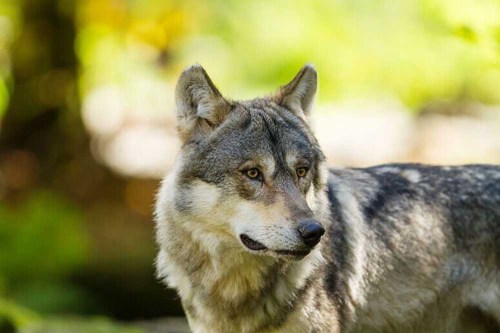Study: Wolves to colonize south-central Washington by 2030
Published 4:15 pm Wednesday, April 12, 2023
Wolves will colonize the South Cascades in south-central Washington by 2030, completing the state’s recovery goals, according to scientists with the University of Washington and state Department of Fish and Wildlife.
Wolves could venture farther into the Olympic Peninsula as early as 2040, though they may be discouraged by obstacles such as Interstate 5, and not get there until 2050, the scientists concluded.
Trending
The scientists, in two related studies, looked at the trajectory of and threats to wolf recovery in Washington. Fish and Wildlife posted links to the studies this week on its website.
In one finding, wolves are expected to become established throughout the state under current levels of lethal removal, with the population in 2070 reaching 544, more than double the 216 counted last year.
Wolves are a state-protected species, though they have met recovery goals in Eastern Washington and north-central Washington. Fish and Wildlife has resisted proposals to regionally delist wolves to give counties in pack-saturated counties more say in managing the apex predator.
Wolf recovery won’t be complete until at least four packs are producing pups in the South Cascades and northwest coast, according to the state’s wolf plan. The department in 2022 counted two wolves in Klickitat County, forming the region’s first pack.
Research led by Fish and Wildlife and published in 2015 predicted wolves would be established in the South Cascades by 2021. The research was based on how packs dispersed in Idaho, Montana and Wyoming.
The new projection is based on knowledge gained from a decade of following 74 wolves fitted with GPS collars in Washington.
Trending
Researchers used the same information to project how lethal removal, hunting, translocation, disease and wolves migrating into the state could affect the number and spread of wolves during the next 50 years.
Researchers looked at 12 scenarios. In most cases, wolves withstood setbacks. In three scenarios, the odds are wolves won’t be meeting recovery objectives in 2070, according to researchers.
In one of the three scenarios, 5% of the wolves are taken by hunters every six months. The Colville and Spokane tribes legally harvesting 11 wolves last year, or 5% of the number counted at the end of the year.
The second scenario projects 30% of the wolves are lethally removed every four years. Over the past four years, Fish and Wildlife has killed 20 wolves to protect livestock, less than one-third the number researchers projected would jeopardize recovery.
The study notes that policies are likely to change if hunting or lethal removals push the wolf population into decline.
The third scenario projects wolves stop migrating into the state from Idaho, Oregon or Canada.
Researchers looked at taking eight wolves from Eastern Washington to either Mount St. Helens or the Olympic Peninsula. Moving the “modest number” of wolves wouldn’t speed up recovery much, they found.
Moving more wolves may accelerate recovery in Western Washington, but translocating wolves is “politically and logistically challenging,” according to the study.
The studies were done by University of Washington researchers Lisanne Petracca, Beth Gardner and Sarah Converse, and Fish and Wildlife biologist Ben Maletzke.










